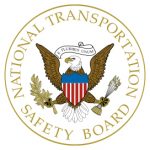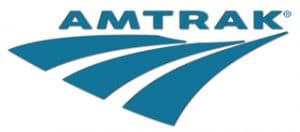
“Our nation is grateful for Administrator Huerta’s service to the FAA and his commitment to aviation safety,” Chao said of Huerta.
Elwell was appointed the FAA Deputy Administrator in June 2017. Elwell took office at 12:01 a.m. on Jan. 7. He was replaced as deputy administrator by Carl Burleson, the deputy assistant administrator for policy, international and environment in an acting capacity. FAA’s Deputy Assistant Administrator for Information and Technology Tina Amereihm has taken over as FAA chief of staff, replacing Chris Rocheleau. Rocheleau was recently named as executive director for international aviation.
Elwell has a wealth of experience with the FAA and other agencies, having held various positions such as FAA assistant administrator for policy, planning and environment from 2006 – 2008; senior vice president for safety, security and operations at Airlines for America from 2013 to 2015; and vice president of the Aerospace Industries Association from 2008 – 2013.
Elwell also served the airline industry as a commercial pilot for 16 years with American Airlines. He is also a former U.S. Air Force lieutenant colonel who saw combat during the Operation Desert Storm conflict.
Author: amyr

The recommendations and briefs stem from the NTSB’s investigations of a railroad employee fatality in Kansas City, Kansas, and a derailment near Heimdal, N.D. The accidents are unrelated.
Recommendation to Union Pacific concerning employee fatality
A Union Pacific Railroad (UP) foreman died after being struck by a remote-control train during switching operations at the east end of Armourdale Yard, Kansas City, Sept. 29, 2015. The NTSB determined the probable cause of the accident was the foreman being in the gage of the track, for unknown reasons, while a train switching movement was being performed by another crew. The report also states inadequate radio communications and inadequate work coordination between crews working in the yard contributed to the accident.
In the course of the investigation the NTSB learned Union Pacific employees received frequent, non-critical, man-down alarms which the NTSB believes likely reduced the attention and reaction crewmembers made to actual critical alarms.
A man-down alarm is an audible warning transmitted of the yard’s radio channels from a remote-control unit (used to remotely control locomotives in the yard) indicating the remote-control unit is not in a vertical position and its operator may be in danger. As a result of the investigation the NTSB issued a safety recommendation to the Union Pacific Railroad to develop and implement a modification to the man-down alarms that would allow workers to differentiate between legitimate and non-critical alarms.
Recommendation to BNSF concerning derailment
A broken wheel led to the derailment of six of the 107 loaded tank cars carrying crude oil in a Burlington Northern Santa Fe crude (BNSF) oil unit train May 6, 2015, near Heimdal, N.D. No injuries or fatalities were reported in connection with the derailment, however five of the derailed tank cars breached, releasing about 96,400 gallons of crude oil. A fire ensued, forcing the evacuation of about 30 people from Heimdal and the surrounding area due to the smoke plume.
The NTSB determined the left wheel, in the second position on car 81 was broken due to a vertical split rim which led to catastrophic failure of the wheel due to multiple overstress fractures.
As a result of the investigation the NTSB issued two safety recommendations to the Federal Railroad Administration (FRA) to research and evaluate wheel impact load thresholds and to mandate remedial actions for railroads to avoid or identify mechanical defects identified by wheel impact load detectors.
A third recommendation was issued to both the FRA and the Association of American Railroads (AAR) seeking collaboration in evaluation of safe peak vertical load thresholds to determine remedial actions for suspected defective wheel conditions in high-hazard flammable train service.
The Heimdal, North Dakota, railroad accident brief is available online at http://go.usa.gov/xndbK and the Kansas City, Kansas, railroad accident brief is available at https://go.usa.gov/xndbN.

“Operation Lifesaver is working to change people’s behavior around railroad tracks and crossings with our educational materials and tips for people of all ages,” said OLI Interim President Wende Corcoran.
“Every year, approximately 900 trespassers and over 1,000 motorists are involved in incidents along train tracks or at grade crossings,” she continued. “Reaching school-aged students with free presentations by our volunteers that are interesting, fun and that convey lifesaving information is an important part of our multi-faceted approach to reducing those numbers.”
The number of trespassers killed or injured while trespassing on railroad tracks and property rose in 2015 and 2016, according to Federal Railroad Administration statistics. Corcoran noted that the new resources have been specifically designed to deliver age-appropriate trespass prevention messages.
The new Operation Lifesaver, Inc. materials include:
- The Trains & Tracks presentation, for use with children in grades K-2 or between the ages of 5-8, introduces young children to basic safety messages and train attributes, emphasizing the importance of using caution around trains and tracks. The information is presented as a story, “Train and the Whateveritwas,” which incorporates key safety messages in an entertaining and engaging format.
- The Train Safety Savvy presentation, for use with children in grades 3-5 or between the ages of 8-11, covers general safety messages, signs and signals, and trespass prevention messages using information and interactive games sequences to keep the attention of this age group.
- The Main Line Middle School presentation, which uses emoji-like characters in a colorful, yearbook-style story line to appeal to smart phone-savvy students in grades 6-8 or ages 11-13, covers general safety messages, signs and signals, and trespass prevention messages.
Corcoran said that the three new educational tools are available for viewing on the OL for Kids section of the Operation Lifesaver, Inc. website. She noted that Operation Lifesaver Authorized Volunteers (OLAVs) may access and download all of these new materials in the Education Materials section of the website, as they do with all OLI presentation materials.
“We are excited to share these new educational materials with students, educators and schools across the U.S.,” said Corcoran.
About Operation Lifesaver – Operation Lifesaver is a nonprofit public safety education and awareness organization dedicated to reducing collisions, fatalities and injuries at highway-rail crossings and preventing trespassing on or near railroad tracks. A national network of trained volunteers provides free presentations on rail safety and a public awareness campaign, “See Tracks? Think Train!” equips the public with tips and statistics to encourage safe behavior near the tracks. Learn more at http://www.oli.org.
Meyers recently served as vice president of operations at the Twin Cities & Western Railroad (TC&W) since 2013. Wegner is the current president and CEO of TC&W and will continue in these positions while taking on duties as CEO at RRVW.
SMART Transportation Division Local 1137 in Fargo, N.D. represents employees of RRVW.
Click here to read more from PR Newswire.

Hylander’s first order of business will be to install a Safety Management System (SMS) at Amtrak.
“Ken is a recognized leader in the implementation and operation of SMS, and his experience will be instrumental in helping build our safety culture,” Amtrak CEO and President Richard Anderson said.
SMS is a proactive risk management system, which builds on predictive safety management methods. The National Transportation Safety Board (NTSB) recently recommended that Amtrak implement a SMS Program in light of multiple derailments that occurred recently.
Below are the preliminary findings of the National Transportation Safety Board (NTSB) as published on their website.

When the train derailed, it was on its first regular passenger service trip on a single main track (Lakewood subdivision) at milepost (MP) 19.86. The lead locomotive, the power car, and two passenger railcars derailed onto Interstate 5. Fourteen highway vehicles came into contact with the derailed equipment.
At the time of the accident, 77 passengers, 5 Amtrak employees, and a Talgo Incorporated technician were on the train. Of these individuals, 3 passengers were killed, and 62 passengers and crewmembers were injured. Eight individuals in highway vehicles were also injured. The damage is estimated to be more than $40.4 million.
At the time of the accident, the temperature was 48˚F, the wind was from the south at 9 mph, and the visibility was 10 miles in light rain.
The authorized track speed north of the accident site is 79 mph and decreases to 30 mph at MP 19.8, prior to a curve. A 30-mph speed sign, was posted 2 miles before the curve on the engineer’s side of the track, to remind the operating crews of the upcoming speed restriction. Furthermore, another 30-mph speed sign was on the wayside at the beginning of the curve on the engineer’s side of the locomotive.
The lead locomotive’s event data and video recorders were successfully downloaded and processed in the NTSB’s Video Recorder laboratory in Washington, D.C. An initial review of the final portion of the accident sequence revealed the following information:
- Inward-facing video with audio captured the crew’s actions and their conversations. A forward-facing video with audio captured conditions in front of the locomotive as well as external sounds.
- The crew was not observed to use any personal electronic devices during the timeframe reviewed.
- About 6 seconds prior to the derailment, the engineer made a comment regarding an over speed condition.
- The engineer’s actions were consistent with the application of the locomotive’s brakes just before the recording ended. It did not appear the engineer placed the brake handle in emergency-braking mode.
- The recording ended as the locomotive was tilting and the crew was bracing for impact.
- The final recorded speed of the locomotive was 78 mph.
Positive Train Control (PTC), an advanced train control system mandated by Congress in the Rail Safety Improvement Act of 2008, is designed to prevent train-to-train collisions, overspeed derailments, incursions into established work zone limits, and the movement of a train through a switch left in the wrong position. If a train does not slow for an upcoming speed restriction, PTC will alert the engineer to slow the train. If an appropriate action is not taken, PTC will apply the train brakes before it violates the speed restriction. In this accident, PTC would have notified the engineer of train 501 about the speed reduction for the curve; if the engineer did not take appropriate action to control the train’s speed, PTC would have applied the train brakes to maintain compliance with the speed restriction and to stop the train.
Central Puget Sound Regional Transit Authority (Sound Transit) is a public transit agency in the State of Washington. Sound Transit is the owner of the Point Defiance Bypass tracks. The Washington State Department of Transportation (WSDOT) is the owner of the controlling locomotive, and 11 of the 12 passenger cars. WSDOT contracts with Amtrak to operate the train service. As part of that contract with WSDOT, Amtrak provides the train crews and locomotive maintenance. Sound Transit reported that the PTC system on this line was not operational at the time of the accident. The current Federal Railroad Administration (FRA) deadline for PTC implementation is December 31, 2018.
The 55-year-old engineer had been working for Amtrak since May 2004 and had been promoted to engineer in August 2013. The other crewmember in the cab of the locomotive was a 48-year-old “qualifying” conductor who was being familiarized with the territory. This conductor had been working for Amtrak since June 2010 and had been promoted to conductor in November 2011. As of the date of this report, the NTSB has not yet been able to interview either operating crewmember of the lead locomotive due to their injuries sustained in the accident.
The parties to the investigation include the FRA; Amtrak; Sound Transit; State of Washington Utilities and Transportation Commission; Siemens Industry, Incorporated (manufacturer of the locomotive); the Brotherhood of Locomotive Engineers and Trainmen; and the International Association of Sheet Metal, Air, Rail and Transportation Workers.
The information in this report is preliminary and will be either supplemented or corrected during the course of the investigation.
In response to a petition of reconsideration filed by the American Short Line and Regional Railroad Association (ASLRRA) of the final rule that requires training, qualification and oversight for safety-related railroad employees, the Federal Railroad Administration (FRA) has issued a Notice of Proposed Rulemaking (NPRM) to delay the implementation of the rule for an additional year.
On Nov. 7, 2014, the FRA published a final rule that established minimum training standards for each category and subcategory of safety-related railroad employees and required railroad carriers to submit training programs to the FRA for approval. Railroads are required to submit their training programs to the FRA by May 1, 2018. Implementation of the programs is currently required by May 1, 2020. The NPRM proposes moving the May 1, 2018, date to May 1, 2019 and the May 1, 2020 implementation date to May 1, 2021. ASLRRA holds that they are still developing their training programs and won’t be ready for submission to the FRA before fall 2018.
The NPRM has been published in the Federal Register and is open for comments until Jan. 19.
Click here to read the NPRM.
Click here to submit comments to the FRA on the NPRM.
The Amtrak Cascades train 501 that derailed over Interstate 5 near DuPont, Wash., Monday, Dec. 18 was speeding, the National Transportation Safety Board (NTSB) said. The train was traveling at around 80 mph in a 30 mph zone, the agency said.
The train was carrying 80 passengers and five crew members. Three passengers have been reported dead and roughly 100 passengers and motorists were injured. The train had two engines, one at the front and one at the rear, and 12 passenger cars. Thirteen of the 14 cars derailed, with only the rear locomotive staying on the tracks. The derailed cars struck five motor vehicles and two semi-trucks on the highway below.
Click here to read more from Seattlepi.


![By Michael Hicks from Saint Paul, MN, USA (img_3134) [CC BY 2.0 (http://creativecommons.org/licenses/by/2.0)], via Wikimedia Commons](https://www.smart-union.org/wp-content/uploads/2018/01/RRVW-300x200.jpg)

